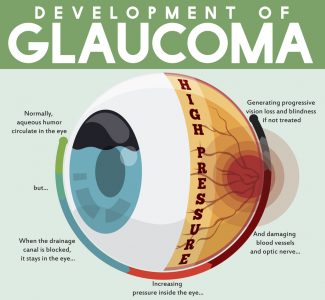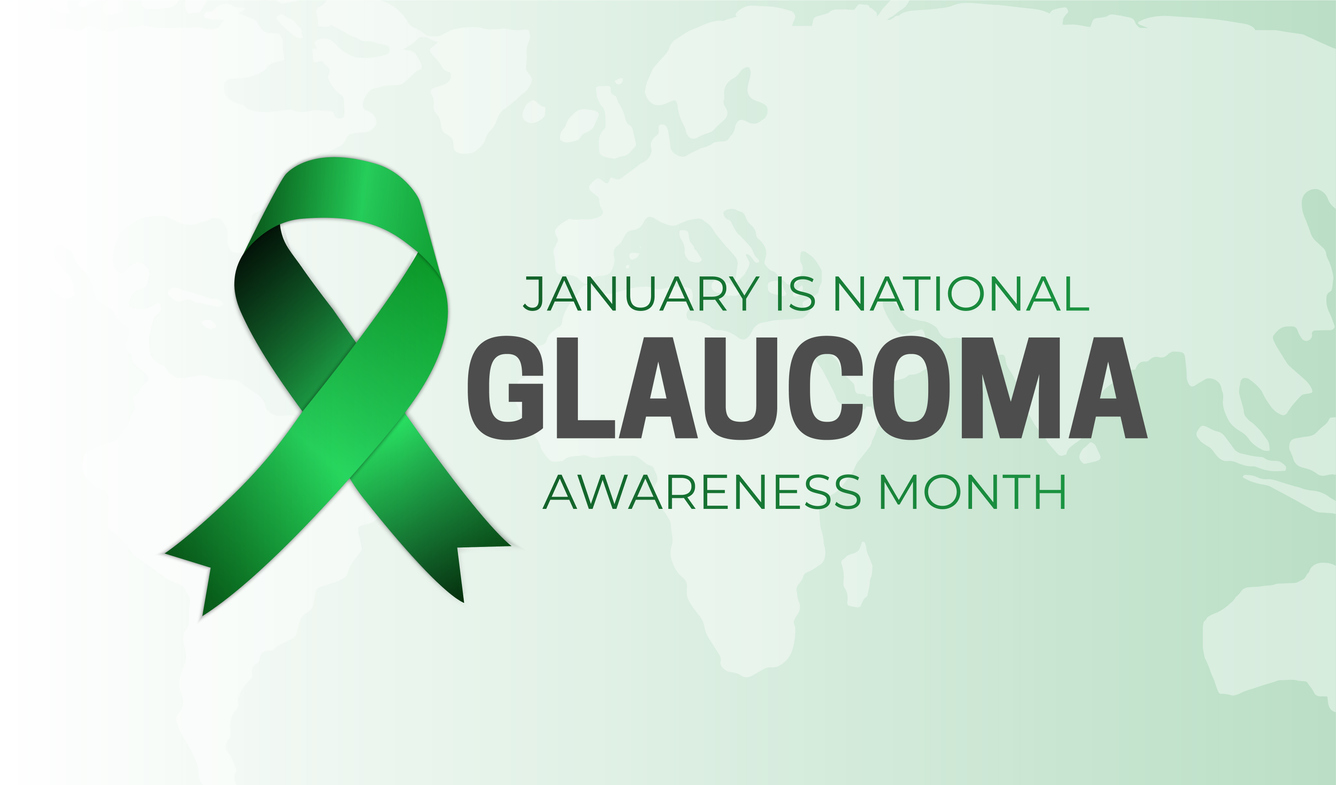Glaucoma is the main cause of permanent blindness, affecting over 60 million people worldwide, including over 3 million in the United States. Glaucoma sneaks up on a person without causing symptoms, and a person can lose up to 40 percent of their vision before even noticing a problem.
January is Glaucoma Awareness Month

According to the Glaucoma Research Foundation, glaucoma is most prevalent in Latino and African American populations and is up to 8 times more common in African Americans than Caucasians. The World Health Organization estimates 4.5 million people are blind due to glaucoma worldwide. Taking care of your eye health and having regular eye exams is crucial in catching this asymptomatic sight-stealing illness.
What is Glaucoma?
Glaucoma is a group of eye diseases that can affect people of all ages but primarily affects the middle-aged and elderly. Glaucoma causes damage to the optic nerve, which is responsible for transmitting images from the eyes to the brain.
There currently is no cure for glaucoma, but surgery or medication can slow it down or further prevent vision loss. It is crucial to detect glaucoma early on for the best treatment outcome.
Treatment for glaucoma depends on which of the two main types you have: primary open-angle glaucoma (POAG), and angle-closure glaucoma. Characteristics are an increase of pressure inside the eye, referred to as intraocular pressure (IOP).
Secondary glaucoma is any case where another disease contributes to or causes pressure within the eye, damaging the optic nerve and causing vision loss.
Glaucoma Risk Factors
People who run a higher risk of developing glaucoma include individuals over 60, diabetics, people who have a family history of glaucoma, and those who are severely nearsighted. People of Hispanic, Asian, and African descent are also at higher risk of developing glaucoma.
Preserve Your Vision
Glaucoma most often does not show symptoms until there has been substantial vision loss. Glaucoma initially affects only the peripheral vision, so many people do not even notice a change until there has been significant vision loss.
Preserving your vision is possible with regular eye exams, early testing and detection, and a treatment plan. If you feel your vision has changed, schedule an appointment with your eye doctor.
Testing for glaucoma involves looking at five factors, which include:
- Measuring the pressure inside your eye (Tonometry)
- Dilating your eye and examining the optic nerve’s shape and color (Ophthalmoscopy)
- Measuring your field of vision (Perimetry)
- Examining the eye where the iris and cornea meet (Gonioscopy)
- Measuring the cornea’s thickness (Pachymetry)
Most Common Treatments for Glaucoma
To effectively treat glaucoma, the intraocular pressure of the eye must be lowered. Treatment can include medications, laser surgery, conventional surgery, or a combination of treatment methods. Your doctor will determine what treatment plan is best for you based on the type of glaucoma you have.
Selective laser trabeculoplasty (SLT) is often used as a first-line treatment. It uses a low level of laser light while using the natural pathway of the eye to improve the drainage of intraocular fluid. Typically, patients experience an improvement in vision for 2-3 years. This treatment can be performed more than once if necessary.
Open-Angle Glaucoma is usually treated with medication to assist the eye in draining fluids better. Most medication for glaucoma is in the form of eye drops. With most medications, your body can build up a tolerance to the eye drops, so it is not uncommon for your prescription to change over time. Speak with your doctor so that you understand the possible side effects of glaucoma medications.
Incisional surgery is used when medications or other treatments have not lowered the eye’s pressure to a lower level. This procedure is done in a surgery center or hospital and involves making an incision in the eye using a microscope and microsurgery instruments.
Minimally invasive glaucoma surgery (MIGS) is not as effective as other treatments but uses smaller incisions which reduces your risk of complications. This surgery can be performed to carry fluid out with the natural drainage system outside of the eye.
Schedule regular eye exams with your doctor and alert them if you notice even a small change in your vision. Early detection of glaucoma and the right treatment plan can drastically improve your chance of preserving your vision.
Greater Waterbury Imaging Center (GWIC) is committed to your overall health and wellness. Our team of skilled and compassionate radiology technicians strives to ensure your experience with us is both comfortable and professional. Contact us today to learn more about the MR imaging services we offer.


